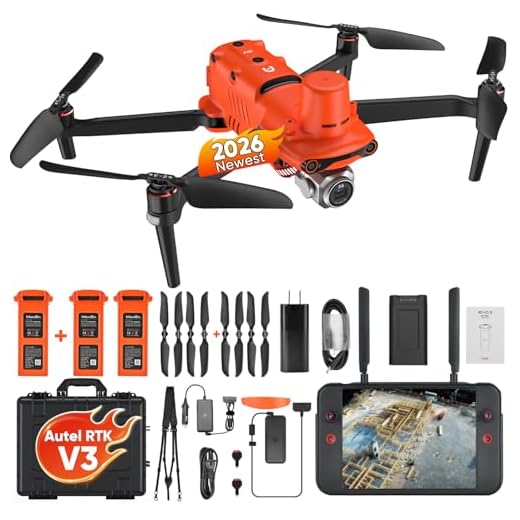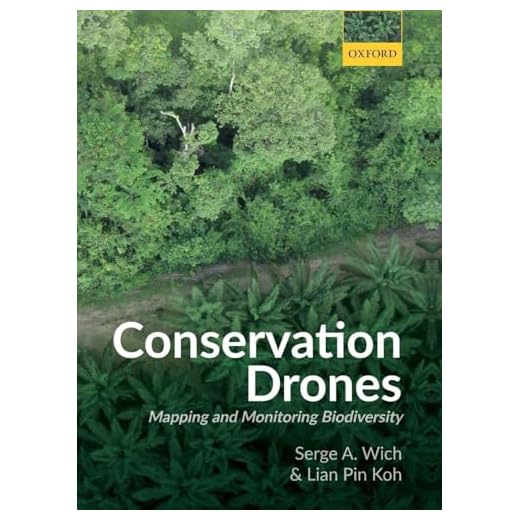




Drones, also known as unmanned aerial vehicles (UAVs), have revolutionized the field of cartography by providing a new perspective on the world around us. These small, agile aircraft equipped with cameras and sensors are capable of capturing high-resolution images and data from above, allowing cartographers to create detailed maps and models with unprecedented accuracy.
One of the key advantages of using drones for cartography is their ability to access remote or hard-to-reach areas that are difficult or dangerous for humans to survey. By flying over landscapes, drones can capture data in real-time, enabling cartographers to map terrain, monitor changes over time, and conduct environmental assessments with greater efficiency and precision.
Furthermore, drones have significantly reduced the time and cost involved in traditional mapping methods, making cartography more accessible to a wider range of industries and applications. From urban planning and agriculture to disaster response and wildlife conservation, drones are transforming the way we map and understand our world.
How Drones Revolutionize Cartography
Cartography, the science and art of making maps, has been revolutionized by the introduction of drones. Drones offer a cost-effective and efficient way to capture high-resolution aerial imagery and topographic data for mapping purposes.
With drones, cartographers can easily access remote or hard-to-reach areas, allowing for the creation of detailed maps of terrain, infrastructure, and land use. Drones equipped with cameras and sensors can collect data quickly and accurately, providing valuable information for various mapping applications.
Furthermore, drones can be programmed to fly specific routes and capture images at consistent intervals, ensuring a systematic and thorough mapping process. This level of automation saves time and resources compared to traditional mapping methods.
In conclusion, drones have transformed the field of cartography by enhancing data collection capabilities, improving mapping accuracy, and enabling the creation of detailed and up-to-date maps for various industries and purposes.
Mapping Unreachable Terrain
Drones play a crucial role in mapping unreachable terrain, such as dense forests, rugged mountains, or hazardous areas. These areas are often difficult or dangerous for humans to access, making traditional mapping methods impractical or impossible.
By deploying drones equipped with high-resolution cameras and LiDAR technology, cartographers can survey and map these remote areas with unprecedented detail and accuracy. Drones can fly over vast expanses of land, capturing images and data that can be used to create 3D models, topographic maps, and other valuable cartographic products.
Benefits of using drones for mapping unreachable terrain:
- Efficiency: Drones can cover large areas quickly and cost-effectively, reducing the time and resources required for mapping projects.
- Safety: Drones eliminate the need for humans to venture into dangerous or inaccessible areas, minimizing risk and ensuring the safety of surveyors.
Overall, drones are revolutionizing the field of cartography by enabling the mapping of terrain that was previously off-limits, leading to more accurate and comprehensive geographic information.
Precision Mapping Capabilities
One of the key advantages of drones in cartography is their ability to provide highly accurate and detailed maps through precision mapping capabilities. Drones equipped with advanced sensors, such as LiDAR and high-resolution cameras, can capture data with centimeter-level accuracy, allowing for the creation of detailed maps with precise geographical information.
These precision mapping capabilities enable cartographers to create maps that are more accurate and up-to-date than traditional methods. Drones can quickly survey large areas and capture detailed information, making them ideal for mapping projects in remote or hard-to-reach locations.
Rapid Data Collection
One of the key benefits of using drones for cartography is the ability to rapidly collect vast amounts of data. Drones equipped with high-resolution cameras and other sensors can cover large areas quickly and efficiently, capturing detailed images and geographical information.
Efficiency
Compared to traditional methods of data collection, such as manual surveys or satellite imagery, drones offer a much faster and more cost-effective solution. With drones, mapping large areas that would have taken weeks or months can now be completed in a matter of hours or days.
Real-time Updates
Furthermore, drones provide the capability for real-time data collection and updates. This means that cartographers can quickly respond to changing conditions on the ground and generate up-to-date maps and spatial information for various applications.
Enhanced Geographic Information Systems
Geographic Information Systems (GIS) play a crucial role in cartography by integrating spatial data to generate maps. Drones have revolutionized GIS by providing high-resolution aerial imagery and data that can be used to create more accurate and detailed maps.
Benefits of Drones in GIS:
- Improved Data Collection: Drones can capture data from hard-to-reach or dangerous areas, enhancing the quality and coverage of GIS datasets.
- Real-time Mapping: Drones equipped with advanced sensors can collect and process data in real-time, enabling rapid map updates and analysis.
- Cost-Effective Mapping: Using drones for data collection is often more cost-effective than traditional methods, reducing the overall cost of GIS projects.
Overall, drones have significantly enhanced Geographic Information Systems by providing a new level of accuracy, efficiency, and accessibility in cartography.
Environmental Monitoring and Analysis
One of the key applications of drones in cartography is environmental monitoring and analysis. Drones equipped with various sensors such as multispectral cameras, LiDAR, and thermal imaging devices can be used to collect data on vegetation health, land cover, soil composition, and more.
With the help of drones, cartographers can gather high-resolution imagery and data over large areas quickly and efficiently. This data can then be used to create detailed maps and models for environmental monitoring and analysis purposes.
Benefits of using drones for environmental monitoring:
- Cost-effective data collection
- Rapid data acquisition
- Ability to access hard-to-reach or hazardous areas
- High-resolution and accurate data
Disaster Response and Recovery
Drones play a crucial role in disaster response and recovery efforts by providing valuable data and imagery to aid in assessment and decision-making.
Assessment and Surveillance
During a disaster, drones can quickly survey affected areas, assess damage, and identify areas of need. This information helps responders prioritize resources and plan rescue operations more effectively.
Search and Rescue Operations
Equipped with thermal imaging and other sensors, drones can locate survivors in hard-to-reach or dangerous areas. They provide real-time data to guide search and rescue teams, improving the chances of finding and saving lives.
| Benefits of Drones in Disaster Response | Examples |
|---|---|
| Quick deployment and coverage of large areas | Mapping flood zones after hurricanes |
| Cost-effective solution for aerial surveillance | Assessing earthquake damage in remote regions |
| Reduced risk to human responders in hazardous environments | Monitoring wildfires for early detection |
Future of Cartography with Drones
Drones have revolutionized the field of cartography, offering new possibilities and advancements that were previously unimaginable. As technology continues to evolve, the future of cartography with drones looks promising and exciting. Here are some key aspects of how drones will shape the future of cartography:
- Enhanced Mapping Accuracy: Drones equipped with high-resolution cameras and LiDAR sensors can capture detailed images and data, leading to more precise and accurate maps.
- Rapid Data Collection: Drones can cover large areas quickly and efficiently, speeding up the process of data collection for mapping projects.
- Improved Accessibility: Drones can access remote or hazardous areas that are difficult for traditional mapping methods, providing valuable information for cartographers.
- Real-Time Mapping: With advancements in drone technology, real-time mapping capabilities are becoming more prevalent, enabling instant updates and analysis of mapping data.
- Integration with AI and Machine Learning: Drones can be integrated with AI and machine learning algorithms to automate map creation, analysis, and interpretation, further enhancing the efficiency of cartography.
The future of cartography with drones is filled with endless possibilities, as these aerial vehicles continue to push the boundaries of mapping technology and provide valuable insights for various industries and applications.
FAQ
How are drones used in cartography?
Drones are used in cartography to capture high-resolution aerial imagery, create 3D models of the terrain, and collect data for creating accurate maps. They can cover large areas efficiently and provide detailed information for various mapping purposes.
What are the advantages of using drones for cartography?
Using drones for cartography offers several advantages, including the ability to access hard-to-reach areas, capture data in real-time, reduce costs compared to traditional methods, and improve the accuracy and quality of maps by providing high-resolution imagery.
How do drones improve the efficiency of cartography?
Drones improve the efficiency of cartography by enabling rapid data collection, reducing the time required to create maps, and automating the process of capturing aerial imagery and terrain data. They allow cartographers to cover large areas quickly and obtain detailed information for mapping purposes.
Can drones be used for creating detailed topographic maps?
Yes, drones can be used to create detailed topographic maps by capturing high-resolution aerial imagery and collecting elevation data. The images and data collected by drones can be processed to create accurate topographic maps that show the terrain features, elevation changes, and contours of the landscape.
What role do drones play in modern cartography?
Drones play a significant role in modern cartography by providing cartographers with a powerful tool for capturing aerial imagery, collecting data, and creating detailed maps. They offer a cost-effective and efficient way to map large areas, monitor changes in the landscape, and support various applications in surveying, urban planning, and environmental management.








